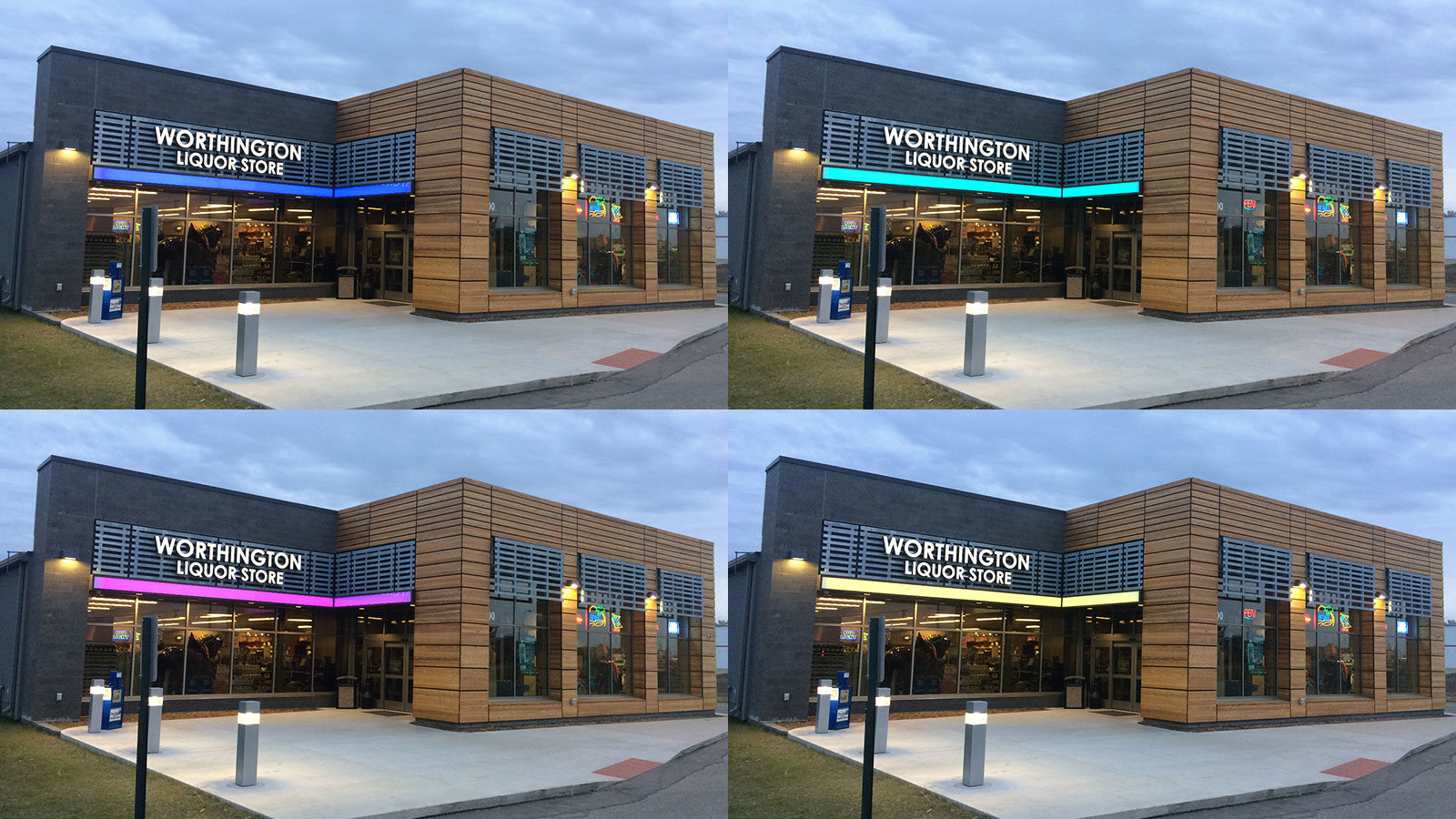When a city takes the lead in improving its property, residents and visitors take notice and the results can be both aesthetically and financially pleasing.
Two municipal liquor-store projects designed by TSP, Inc. are good examples. Tall Grass Liquor opened in November 2015 in Marshall, MN, while Worthington Liquor Store in Worthington, MN, moved to its new location just this summer and had its ribbon-cutting in October.
In both cases, TSP architect Greg Schoer designed the new stores to reflect the communities they represent. Tall Grass Liquor, which doubled the size of its floor space from its previous location, uses a mural to highlight Marshall’s culture and industry. A second mural in the wine department depicts city icons and history. Schoer used native materials in the building’s exterior and interior, giving the liquor store a distinct sense of place.
Brad Gruhold, president of the Marshall Area Chamber of Commerce, says the new building has given a boost to those who support the community. “It’s got to be one of the best-looking liquor stores for miles,” he said. “Absolutely there’s a sense of pride.”
In Worthington, the liquor store moved from the site it had occupied since the 1980s, which city officials wanted for its utilities department, to an unused storefront on an important business street. Schoer renovated an ordinary metal building façade that resembled multiple similar structures into a unique building designed to draw in customers.
“I wanted to create a façade that as people drive by they can easily see from their vehicle and one that welcomes them to stop in,” he says. “It’s a return to the traditional downtown storefront where you display your product.”
City officials in Marshall and Worthington shared the same dream, Schoer says: a building that represented the community with a distinct visual appeal. That dream can become reality when officials develop a back-and-forth dialogue with an architect, who brings their ideas to fruition, he says.
Dan Wycoff, manager of the Worthington Liquor Store, says community reaction to the renovation has been “jaw-dropping. I have not heard a negative word.”
Any municipally owned enterprise is designed to make its city-owner money, Wycoff says, and benefit residents through the taxes they pay. The Worthington Liquor Store, a successful money-maker in the past, has seen dramatic results since the new store opened. It now sees about 35 more customers a day and registers an additional $1,250 in daily sales.
He said the liquor store recorded a 16 percent increase in sales in August 2018 compared to the previous year and a 5.5 percent increase from September 2017 to this past September. Wycoff predicts a 10 percent increase in sales from 2018 over 2017 and says that will make an impact on the city coffers.
“And the fourth quarter is the biggest quarter for us in the retail business,” Wycoff says. “If the weather is decent with the new store, well, I’m just being conservative.”
Money generated by municipal liquor store sales is transferred back to the city to help fund its projects. In Marshall, municipal liquor store funds have been used to construct the Marshall-Lyon County Library, for example.
The City of Marshall saw a 13 percent increase in the liquor store’s gross sales in 2016, the first full year it was open, over the preceding year. The increase from 2017 over 2016 came to 4.5 percent for a two-year gross sales’ increase of 18 percent.
Schoer appreciates knowing the cities are seeing financial success. His architect’s eye, however, remains focused on how the design he created will reflect community values and make an impact on other properties.
“Architecture is highly visible as an art form,” Schoer says. “Architecture provides a connection for the community. Even if it’s a building you might never enter, the exterior design gives people a feeling of pride. The best building designs evoke an emotional response.”

